How to Fertilize Herb Gardens for Potent and Aromatic Leaves
- February 21, 2024
- 0 comment
Discover how to fertilize herb gardens for potent and aromatic leaves with our expert guide. Ensure robust and flavorful herbs. Fertilizing herb gardens correctly is crucial for growing herbs with a strong aroma and taste. This guide provides straightforward advice on the best fertilization practices. By applying these techniques, gardeners of all levels can improve the health and flavor of their herbs, ensuring a successful harvest.
Table of Contents
- Understanding Herb Garden Needs
- Introducing the Best Fertilizers for Herb Gardens
- Fertilizing Different Herbs
- Best Practices for Fertilizing Herb Gardens
- Watering in Relation to Fertilization
- Monitoring and Adjusting Fertilization Strategies
- Organic Fertilization and Environmental Considerations
- Conclusion
- FAQs
Understanding Herb Garden Needs
Identifying Common Herbs and Their Nutritional Needs
Each herb variety, from the lush green basil to the resilient rosemary, has distinct nutritional preferences that influence its growth, taste, and aroma. Basil and mint, for instance, demand a nitrogen-rich environment to flourish and develop their full leafy potential, directly impacting their flavor profile.
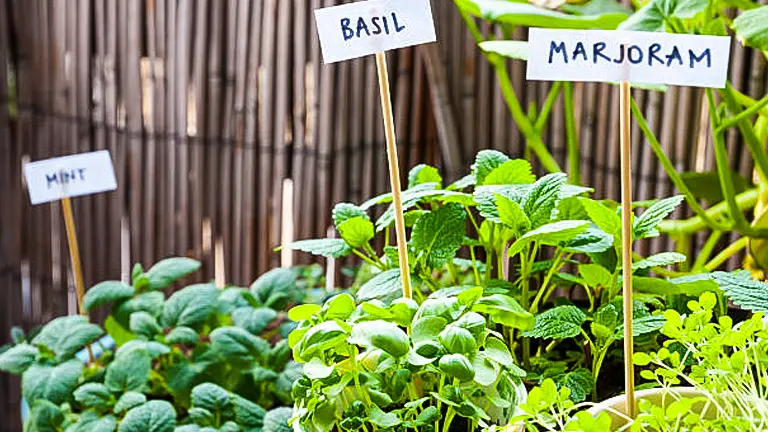
Conversely, herbs like rosemary and thyme thrive in leaner soil conditions, where a lower nitrogen content concentrates their essential oils, magnifying their aroma and taste. Recognizing and catering to these specific needs is crucial for cultivating a vibrant and sensory-rich herb garden.
Nutritional Requirements of Common Herbs
| Herb | Preferred Nitrogen Level (mg/L) | Soil pH Range | Notes |
|---|---|---|---|
| Basil | 150-200 | 6.0 – 7.5 | Requires rich, moist soil; benefits from compost |
| Mint | 150-200 | 6.0 – 7.5 | Prefers consistent moisture; avoid dry conditions |
| Rosemary | 50-100 | 6.0 – 7.5 | Thrives in well-draining, sandy soil |
| Thyme | 50-100 | 6.0 – 8.0 | Prefers lean, dry soil to concentrate essential oils |
The Significance of Soil Health
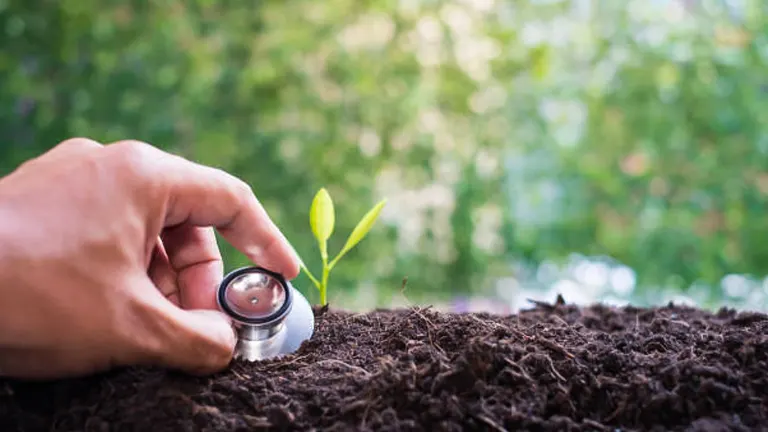
Soil health is paramount for a productive herb garden, as it influences not just the growth and yield but the very essence of what makes herbs a culinary delight. The organic content of soil, ideally between 5% and 10%, plays a crucial role in nutrient availability and water retention. Organic matter, such as compost or leaf mold, acts as a slow-releasing nutrient source and enhances soil structure, promoting root development and microbial activity. These soil microbes are vital for nutrient cycling, converting organic matter into forms that plant roots can absorb.
Key Soil Health Indicators and Their Impact on Herb Gardens
| Indicator | Ideal Range/Value | Impact on Herb Gardens |
|---|---|---|
| Organic Matter Content | 5% to 10% | Enhances soil structure, water retention, and nutrient availability. Promotes vigorous root and plant growth. |
| Soil pH | 6.0 to 7.5 | Affects nutrient availability and absorption. Outside this range, nutrient lockout can occur. |
| Microbial Activity | Not specifically quantifiable | Essential for nutrient cycling and improving soil health. Encourages symbiotic relationships (e.g., with mycorrhizal fungi) that enhance nutrient and water uptake. |
| Nutrient Levels (NPK) | Varies by herb | Nitrogen (N) for leaf growth, Phosphorus (P) for root development, and Potassium (K) for overall health. Balanced levels tailored to specific herbs optimize growth and flavor. |
| Water Retention vs. Drainage | Balanced | Ensures herbs receive adequate moisture without waterlogging, crucial for preventing root diseases and ensuring healthy growth. |
Understanding and optimizing these soil health indicators can significantly improve the growth conditions for herb gardens. For instance, incorporating organic compost not only boosts the organic matter content but also gradually amends the soil pH towards a neutral range, making it more suitable for a wide variety of herbs. Additionally, engaging in practices that encourage microbial diversity, such as using mycorrhizal fungi inoculants or avoiding broad-spectrum pesticides, can further enhance soil vitality and plant health.
Introducing the Best Fertilizers for Herb Gardens
Choosing the appropriate fertilizer is crucial for cultivating herbs with intense flavors and aromas. The decision between organic and synthetic fertilizers involves understanding their nutrient content, rate of release, and overall impact on plant health and soil ecosystem.
Organic Fertilizers: Nourishing Beyond Nutrients
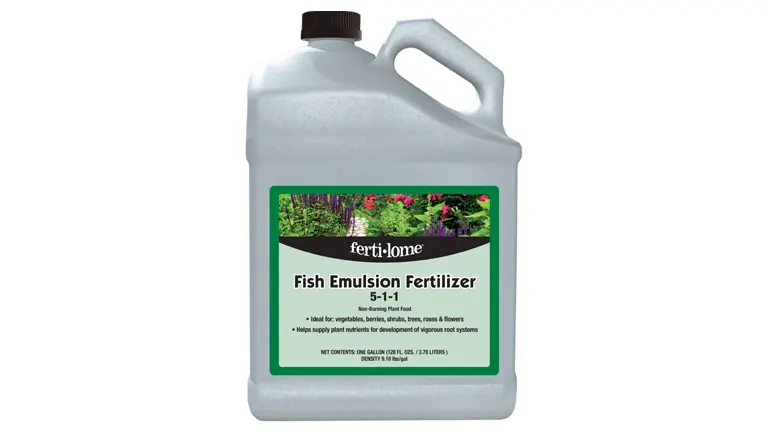
Organic fertilizers, derived from natural materials like fish emulsion, seaweed extract, and compost, offer a rich array of macro and micronutrients. They do more than just feed the plants; they enhance the soil’s structure, increase microbial activity, and improve water retention.
- Fish Emulsion: A concentrated source of nitrogen, it’s ideal for leafy herbs like basil, promoting vigorous growth and lush foliage. It typically contains a nutrient ratio of approximately 5-2-2 (N-P-K), though this can vary.
- Seaweed Extract: Besides providing a balanced mix of nutrients, it contains growth hormones and trace elements that stimulate root development and stress resistance in herbs. Seaweed extracts usually offer a lower N-P-K ratio but are rich in potassium, which supports overall plant health.
These organic options release nutrients slowly, matching the natural growth rhythm of plants and ensuring a long-term supply of food.
Synthetic Fertilizers: Precision and Control
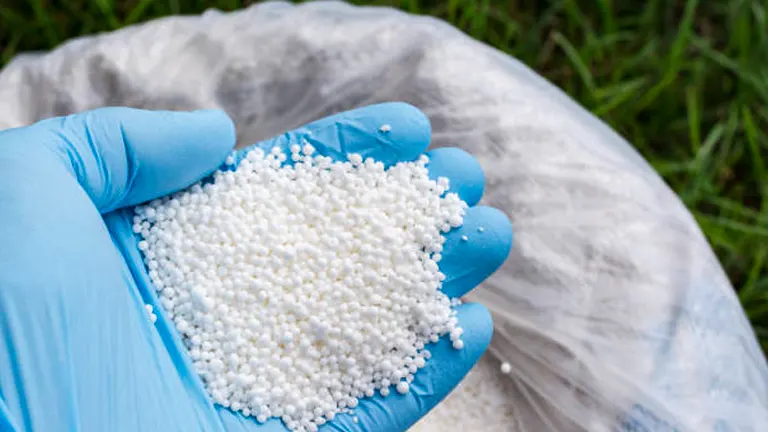
Synthetic fertilizers, such as a balanced 10-10-10 NPK granular formula, offer precise nutrient ratios and quick availability. This can be particularly beneficial during the peak growing season when herbs exhibit rapid growth and have high nutrient demands.
- 10-10-10 NPK Formula: Provides an equal proportion of Nitrogen, Phosphorus, and Potassium, supporting leaf growth, root development, and plant health. However, its fast-release nature requires careful application to prevent nutrient overload.
While effective, synthetic fertilizers lack the soil-enhancing benefits of organic alternatives and can contribute to salt buildup over time if not used responsibly.
Comparative Analysis: Organic vs. Synthetic Fertilizers
To provide a clearer understanding, the following table compares key aspects of organic and synthetic fertilizers relevant to herb gardening:
| Aspect | Organic Fertilizers | Synthetic Fertilizers |
|---|---|---|
| Nutrient Release | Slow and steady, matching plant needs | Quick, immediate availability |
| Nutrient Ratio | Varied, often lower NPK, rich in micronutrients | Precise, can be tailored (e.g., 10-10-10) |
| Soil Health | Improves structure, microbial activity, water retention | Little to no benefit, potential for salt buildup |
| Environmental Impact | Sustainable, low risk of leaching | Higher risk of runoff, environmental harm |
| Effect on Plant Health | Supports overall health, encourages strong root systems | Quick growth, risk of nutrient imbalance if overused |
| Best For | Long-term soil health and gradual plant growth | Immediate nutrient needs, specific growth stages |
Practical Recommendations for Herb Gardeners
- For Leafy Herbs: Opt for organic fertilizers like fish emulsion to promote foliage without compromising flavor.
- For Balanced Growth: Use seaweed extract to encourage healthy root systems and stress resilience.
- When Immediate Nutrients Are Needed: Consider a controlled application of synthetic fertilizers, especially for fast-growing or nutrient-deficient plants.
Incorporating a blend of fertilization strategies can achieve the best of both worlds: immediate nutrient availability when needed, and long-term soil health and sustainability. By understanding the specific needs of their herb garden and choosing the right type of fertilizer, gardeners can ensure their herbs are not only potent and aromatic but also grown in an environmentally responsible manner.
Fertilizing Different Herbs
Basil and Mint: High-Nitrogen Fertilizers for Leafy Growth
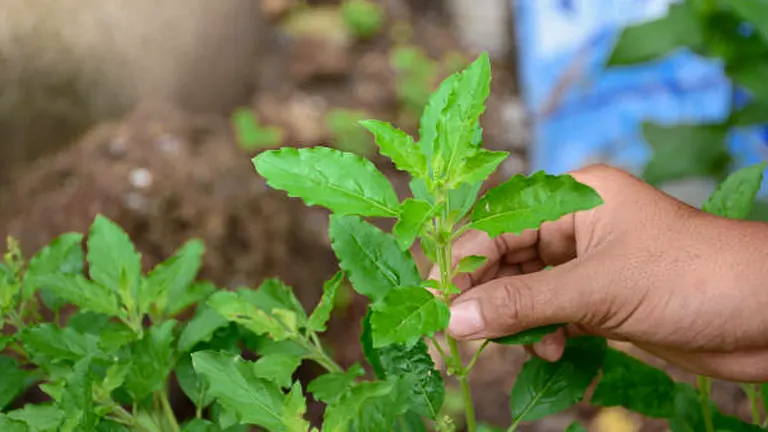
Basil and mint are renowned for their lush foliage and vibrant flavors, making them staples in any herb garden. These herbs benefit significantly from high-nitrogen fertilizers, which stimulate vigorous leaf production. An organic choice such as composted chicken manure or a fish-based fertilizer can enrich the soil with the necessary nitrogen levels, promoting dense, flavorful growth without compromising the herbs’ natural aroma.
Rosemary and Thyme: Low-Nitrogen, Well-Draining Conditions

In contrast to the leafy greens, herbs like rosemary and thyme demand a more restrained approach. These Mediterranean natives prefer well-draining soil with moderate to low fertility, mimicking their natural rocky habitats. A light application of a low-nitrogen, organic fertilizer, or simply amending the soil with sand and small pebbles, can improve drainage and encourage the concentration of essential oils, thereby intensifying the herbs’ aroma and flavor.
Cilantro and Parsley: Balanced Fertilizers for Continuous Harvesting
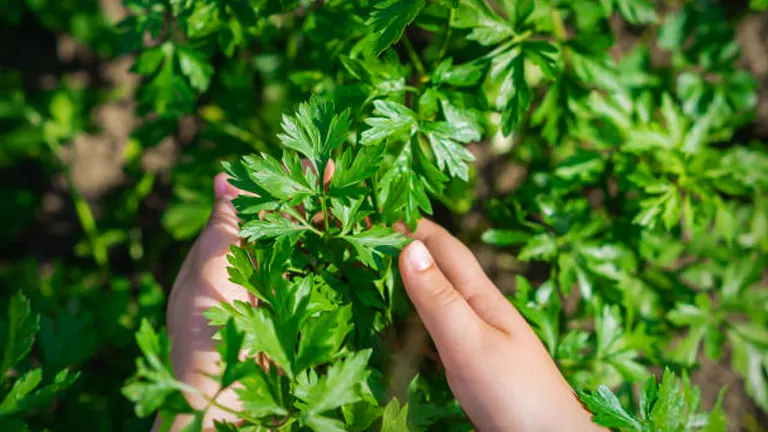
Cilantro and parsley, herbs that are often harvested for both their leaves and seeds, require a balanced fertilization regime. A balanced, slow-release organic fertilizer, with equal parts nitrogen, phosphorus, and potassium, supports both leaf production and root development. This approach ensures a continuous harvest, allowing the plants to regenerate and produce flavorful foliage over a longer period.
Customizing Fertilizer Mixes for Each Herb

Understanding the unique needs of each herb allows for the customization of fertilizer mixes. For gardeners mixing their own, incorporating specific ratios of compost, bone meal, and green sand can tailor nutrient levels to each plant’s requirements. Alternatively, carefully selected pre-made organic fertilizers that align with these needs can offer convenience without sacrificing the benefits of a customized approach.
Best Practices for Fertilizing Herb Gardens
Timing and Frequency of Fertilization
The timing and frequency of fertilizing herb gardens are crucial for maximizing growth without overburdening the plants with excess nutrients. Generally, a pre-planting incorporation of compost or a balanced organic fertilizer sets the stage for healthy growth. Subsequent feedings should be timed according to the herb’s growth cycle and the fertilizer’s release rate, usually once at the onset of the growing season and then sparingly as needed, ensuring plants have access to nutrients during peak growth periods.
Techniques for Applying Fertilizers
Applying fertilizers correctly is as important as choosing the right type. For granular fertilizers, evenly spreading the granules around the base of the plants and then lightly mixing them into the top layer of soil helps prevent nutrient burn and ensures that the roots have easy access to the fertilizer. Liquid fertilizers, on the other hand, should be diluted according to the manufacturer’s instructions and applied directly to the soil, avoiding foliage to minimize the risk of leaf burn.
Watering Relation to Fertilization

Proper watering practices are essential to maximize the effectiveness of fertilization in herb gardens. Water facilitates the dissolution and distribution of nutrients in the soil, making them accessible to plant roots. However, over-watering can lead to nutrient leaching, where essential nutrients are washed away before plants can absorb them, while under-watering can prevent nutrients from dissolving fully, limiting their availability.
Optimizing Nutrient Uptake Through Watering
To optimize nutrient uptake, water your herbs deeply and infrequently, encouraging the development of a strong root system that can access nutrients more efficiently. After fertilizing, a thorough watering helps integrate the fertilizer into the soil, but be mindful to avoid waterlogging, which can suffocate roots and disrupt nutrient absorption. The goal is to maintain a balance where the soil is moist but not saturated, ensuring nutrients remain in the root zone.
Monitoring and Adjusting Fertilization Strategies
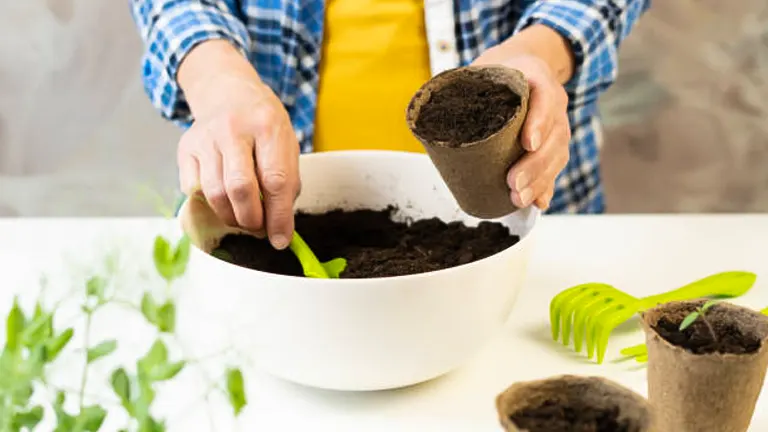
Observing the health and growth of your herbs provides invaluable feedback for adjusting fertilization strategies. Signs of nutrient deficiencies, such as yellowing leaves (nitrogen deficiency) or weak stem growth (phosphorus deficiency), indicate a need for nutritional adjustments. Conversely, symptoms of over-fertilization, including salt buildup in the soil or burnt leaf edges, necessitate a reduction in fertilizer application.
Adaptive Fertilization Based on Plant Performance
Regular monitoring allows gardeners to adapt their fertilization practices to the specific needs and responses of their herbs. If signs of deficiency appear, consider a soil test to identify lacking nutrients and adjust your fertilization plan accordingly. For signs of excess, flush the soil with water to help dilute and remove excess nutrients, and reduce future fertilizer applications to prevent recurrence.
Organic Fertilization and Environmental Considerations
The trend towards organic gardening reflects a growing awareness of the environmental impact of gardening practices. Organic fertilization is at the heart of this movement, offering a sustainable approach to nurturing herb gardens.
Advantages of Organic Fertilizers
Organic fertilizers, derived from natural sources, are not only safer for the environment but also for the plants and those who consume them. They release nutrients slowly, matching the natural growth rate of herbs, and improve soil structure and health over time. This sustainable approach supports biodiversity in the garden, attracting beneficial insects and promoting a balanced ecosystem.
Environmental Impact and Sustainability
Using organic fertilizers minimizes the risk of chemical runoff, a common issue with synthetic fertilizers that can harm local waterways and wildlife. By choosing organic, gardeners contribute to a healthier environment, reducing their carbon footprint and supporting the well-being of their local ecosystem.
Related Post
- How to Build a Barn: A Step-by-Step Guide for Beginners
- How to Build a Sustainable Compost Bin: Easy and Eco-Friendly DIY
- How to Fertilize Bougainvillea: A Complete Guide for Stunning Blooms
- How to Fertilize Apple Trees: Essential Tips for a Bountiful Harvest
- How to Fertilize Lemon Trees: Secrets for Thriving Citrus
- How to Fertilize Avocado Tree: A Step-by-Step Guide for Lush Growth
- 10 Best Bow Saws to Buy in 2024: Top Picks for the Money
- Best Miter Saw For Beginners
- Top 10 Pruning Saws to Buy in 2024: Best for the Money
- 7 Best Pocket Chainsaw
Conclusion
Fertilizing herb gardens with precision and care is key to cultivating plants that offer the most potent flavors and aromas. The journey to a successful herb garden involves understanding the specific needs of each herb, choosing the right type of fertilizer, and applying it in a way that supports healthy growth without overburdening the plants. By incorporating the practices outlined in this guide, gardeners can enhance the sensory qualities of their herbs, making every harvest more rewarding.
FAQs
- What is the best time of year to fertilize my herb garden?
The optimal time to fertilize your herb garden is in the early spring as new growth begins and again in mid-summer to support continued growth. Avoid fertilizing late in the season as this can stimulate new growth that won’t survive winter frosts. - Can I use the same fertilizer for all my herbs?
While many herbs have similar nutritional needs, it’s beneficial to tailor your fertilization based on specific herb requirements. Leafy herbs like basil and mint thrive with higher nitrogen levels, whereas woody herbs like rosemary and thyme require less nitrogen. Use a general-purpose organic fertilizer as a base and adjust with specific amendments as needed. - How often should I fertilize my herbs?
Frequency depends on the type of fertilizer used. Slow-release organic fertilizers typically require application once at the beginning of the growing season, while liquid fertilizers may need application every 4-6 weeks. Always follow the product’s instructions and observe your plants for signs they need a nutrient boost. - Is it possible to over-fertilize my herb garden? What are the signs?
Yes, over-fertilization can harm your herbs, leading to nutrient burn, characterized by yellowing or browning leaf edges, and stunted growth. To avoid this, use fertilizers according to package directions and monitor your plants for adverse reactions after application. - Can homemade compost be used as a fertilizer for herbs?
Absolutely! Homemade compost is an excellent organic fertilizer for herbs, providing a wide range of nutrients and improving soil structure. Apply a 2-3 inch layer of compost around your herbs in the spring to nourish them throughout the growing season. - What role does water play in fertilizing herb gardens?
Water is crucial for dissolving and distributing nutrients from fertilizers to the plants’ roots. Always water your garden thoroughly after applying granular fertilizer to help integrate the nutrients into the soil. However, be careful not to over-water, as this can lead to nutrient leaching. - Should I adjust my fertilization strategy based on the herb’s growth stage?
Yes, younger herbs or those in the active growing phase may benefit from more frequent fertilization to support their rapid growth. Conversely, established or slower-growing herbs may require less frequent fertilization. Tailor your approach based on each herb’s growth stage and health. - Are there any eco-friendly fertilization practices for herb gardens?
Using organic fertilizers, like compost, manure, or fish emulsion, is eco-friendly and supports sustainable gardening by reducing chemical runoff and improving soil health. Additionally, implementing a mulching strategy can conserve water and naturally suppress weeds, reducing the need for herbicides.
To cultivate a vibrant herb garden, focus on quality fertilization. By tuning into your herbs’ distinct needs and thoughtfully applying the right kind of nutrients, you’ll unlock a natural world of rich, flavorful aromas in every leaf. A touch of care and understanding your green’s world is all it takes to bring life to your table.

Benjamin Brooks
Forestry AuthorGreetings! I'm Benjamin Brooks, and my journey over the past 15 years has revolved around the fascinating realms of content creation, expertise in snow clearing, and the intricate world of lumberjacking and landscaping. What began as a simple curiosity about the natural world and heavy machinery has evolved into a passionate profession where my love for crafting words intertwines seamlessly with my lumberjacking and garden skills.











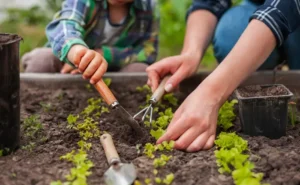

Leave your comment